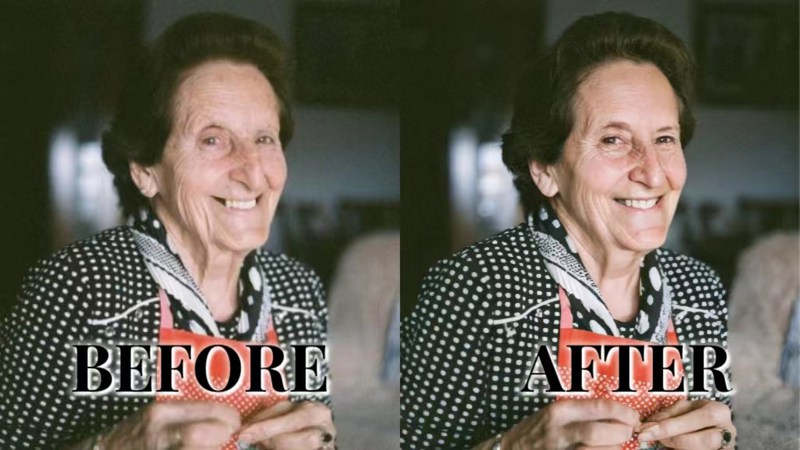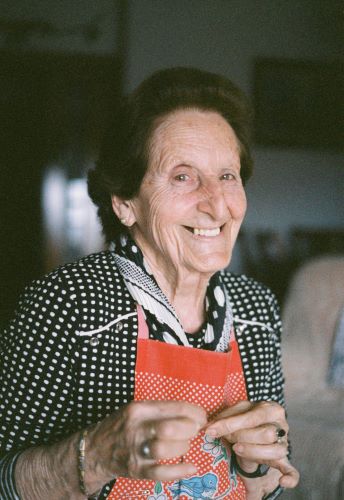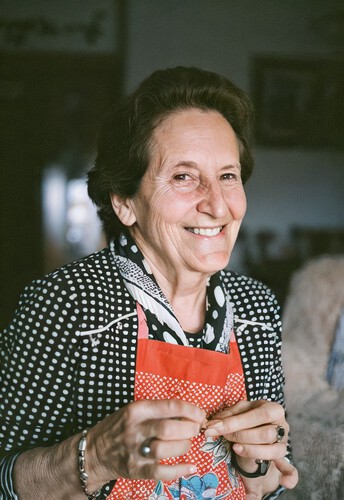
Video Quality Enhancer: From Standard Definition to HD

If you like documenting special occasions, you probably have hundreds of hours of video footage stored somewhere. I know I do. The problem is that some of them are so grainy and blurry that it’s hard to enjoy watching them anymore.
In my hopes to try and save these precious memories, I came across BeautyPlus, a trusted video quality enhancer.
Using the latest in AI technology, this tool analyzes and manipulates existing pixels to increase video resolution. The result? I was able to transform blurry footage into sharp, high-definition videos.
Want to do the same? You can go ahead and download BeautyPlus AI video enhancer now. But if I were you, I’d like to learn more about video enhancement first so I know I’m on the right track.
Understanding Video Resolution
Before we talk about video quality enhancers, we must first understand their core concept: resolution.
Resolution, which refers to exactly how many pixels make up a video frame, determines how much detail the video can display. More pixels mean a higher resolution and a sharper and clearer image.
Standard Definition (SD)
Did you save those old VHS tapes even when they made your favorite movies look like a blocky mess? Same! In a nutshell, that’s the magic (or lack thereof) of standard definition (SD) resolution.


Among the most common SD resolutions are:
- 480i: This resolution interlaces two fields, each one containing half the vertical resolution (240 lines) of the full frame. Therefore, you see half the picture, and your brain fills in the gaps to create a smooth image.
- 480p: As an improved version of the 480i, 480p resolution displays the entire frame progressively. This means all the lines of the image are drawn at once, resulting in a sharper and more stable picture.
TAKEAWAY: While 480i offered a decent picture for its time, it was prone to interlacing artifacts, especially in fast-moving scenes. The better and improved 480p resolution resolved that problem.
Of course, I can’t deny that the old footage I found in SD resolution holds sentimental value. That’s why I wanted to find a way to watch them on my modern, high-resolution display.
When I did try playing the footage on my modern TV, I couldn’t see fine details like facial expressions and textures. I could also see individual pixels, making it seem like a mosaic.
High Definition (HD)
Thankfully, technology has evolved (and continues to), and we now have high-definition (HD) videos. These boast an impressive number of pixels per frame, allowing you to see a sharper and more detailed picture.
Among the most common HD resolutions are:
- 720p: With 720 lines of vertical resolution, 720p videos boast a sharper image with more discernible details. This marks the baseline for what we now know as high-definition video.
- 1080p: Taking it a step further, this resolution packs an impressive 1080 lines of vertical resolution. When I did convert old footage of a family gathering to 1080p, I was able to see the texture of my old house’s wallpaper and the smile lines on my grandma’s face. That’s the power of 1080p resolution.


The Limitations of Traditional Video Editing
For years, I’ve tried several traditional video editing software to improve the quality of low-resolution videos or remove video watermark. I even tried to upscale video to 1080p online free of charge. More often than not, it did not meet the level of video enhancement I would’ve liked to achieve.
Here’s why relying only on these methods might not make your video look its best:
- Upscaling: Video upscaling is when the software stretches existing pixels to fill a higher-resolution frame. However, it doesn’t create new information. So, when you upscale to 1080p, for example, it becomes a blurry, often pixelated image that lacks detail.
- Sharpening Filters: These filters enhance sharpness by boosting edge contrast. The perception of detail improves, but it comes at a cost. You’ll notice unwanted artifacts (visual glitches that weren’t originally there) and more noise in the video.
- Color Correction: Correcting the color makes the video more visually appealing. There will be improvements in the color balance and vibrancy, but it won’t fill in missing details from a low-quality video.
TAKEAWAY: Traditional video editing tools offer valuable features, but for a true quality boost, you need more advanced solutions. This is where video quality enhancers with AI technology become helpful.
The Magic of AI Video Quality Enhancement
A video quality enhancer that is AI-powered uses sophisticated algorithms to improve your video footage. Basically, it takes existing video frames and then “fill in the blanks” to make them clearer and sharper.
Here’s how some of the key techniques work together:
- Upscaling with Intelligence: Using machine learning, AI video enhancers intelligently analyze the video and then create new pixels to complement the existing ones. In turn, you get to increase resolution without sacrificing detail.
- Denoising for Clarity: When there’s unwanted noise and grain from a blurry video, the overall viewing experience is compromised. But thanks to AI video enhancement, you can remove this noise and have a cleaner, more polished video when you upscale 480p to 720p.
- Sharpening with Precision: Similar to traditional sharpening, AI enhancers can enhance edge contrast. However, AI algorithms are far more sophisticated. They can sharpen details and enhance the quality of your video while minimizing the introduction of artifacts.
- Color Correction: AI video enhancers go beyond adjusting color saturation. They can analyze the entire video and correct color casts, improve vibrancy, and even enhance specific color ranges for a more natural look.
The combined power of these AI-powered features means you can easily enhance your video quality from grainy, low-resolution footage into a visually stunning masterpiece.
BeautyPlus, for example, uses cutting-edge AI technology to come up with a user-friendly online video enhancer. With just a few clicks, you can upload your old, standard-definition video and convert it into HD quality.
What Makes BeautyPlus’ AI Video Quality Enhancer Stand Out?
As someone who likes videotaping all kinds of things, it’s important for me to find a tool that can help me make sure my videos give the best viewing experience. And in my quest to find that tool, I came across BeautyPlus AI video quality enhancer.
Here’s why it is the best online AI video enhancer for me:
Unmatched Upscaling
BeautyPlus’ AI algorithm goes miles beyond simply upscaling video content. When I used it to upscale 480p to 1080p (my daughter’s birthday party footage from years ago), it was able to recognize patterns and create new pixels that seamlessly blended with the existing ones.


The result? Impressive video clarity that we were able to enjoy watching up to 4K without any pixelation or blurry details.
Noise Reduction
There have been many times my shaky hands or low-light conditions made my videos end up with unwanted noise and grain. Good thing, I learned that BeautyPlus can fix those right up.
More than just a video upscaler, its AI engine boasts advanced noise reduction algorithms that meticulously identify and remove this noise, leaving me with a clean, professional-looking video.
User-Friendly Finesse
I know you’ll agree when I say that technology shouldn’t come with a complicated user interface. And the team at BeautyPlus believes the same, making sure its video enhancer is designed with simplicity in mind.
With just a few clicks and intuitive controls, you can upload your video and let the AI do the rest. No technical expertise is required – you’re good to go!
There’s also no need to worry about compatibility issues. No matter what file format the video is (mp4, mov, m4v, and 3gp), BeautyPlus is able to process it.
TAKEAWAY: Even without prior video editing experience, BeautyPlus lets you unblur, enhance, and professionalize low-quality videos and turn them into high-quality visuals.
Are you ready to unlock the hidden potential of your videos? Download BeautyPlus’ AI video quality enhancer and experience the magic of AI video enhancement today!
How To Enhance Video Quality With BeautyPlus
If you’re also looking for a video enhancer online, BeautyPlus’ new AI feature is the way to go. The process is simple enough to follow that I was able to use it without any problems. Here’s how I did it:
Step 1: Upload Your Video
Head over to the BeautyPlus website and click on the AI Video Enhancer tab. Then, click the “Upload” button and select the video you want to enhance.
Step 2: Wait for the AI To Do Its Magic
Once your video is uploaded, BeautyPlus will automatically enhance the video based on its AI technology. You can then use the preview function (usually a small playback window) to compare the original video with the enhanced version.
Step 3: Download and Share Your Masterpiece!
If you’re happy with the results, simply click the “Download” button and save the enhanced video to your computer. You can then choose to download the quick five-second preview video or the full HD video, both at 1440*2560px.
Improve Video Quality With BeautyPlus
Thanks to AI-powered video quality enhancers like BeautyPlus, I now have the power to breathe new life into old footage. Other times, I use it to enhance social media content and create professional-looking presentations.
Regardless if you’re an experienced video editor or a complete beginner, BeautyPlus’ AI video quality enhancer to 4K has got you covered. Use it to upscale, adjust brightness, color correct, and reduce noise in all your videos. Download it today and see the magic for yourself!

